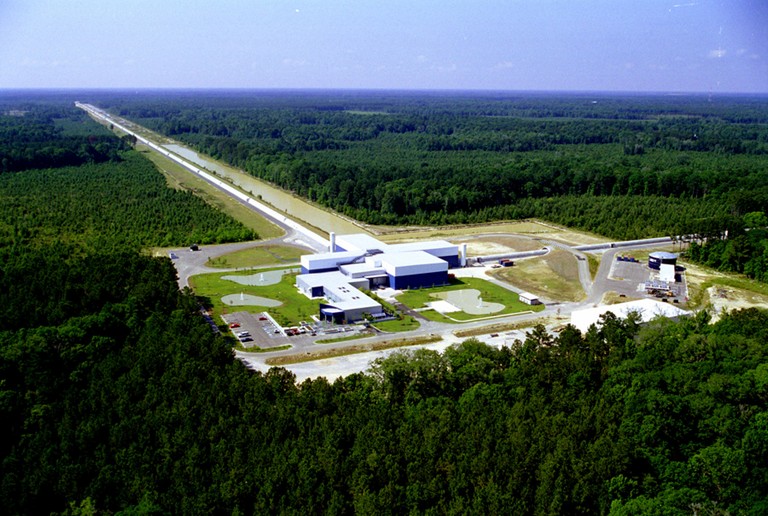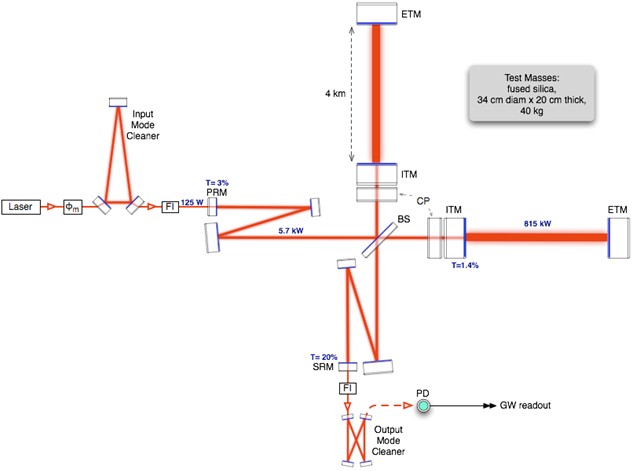About LIGO
Laser interferometer gravitational wave observatory (LIGO) is a detector to understand origin of the gravitational waves (LIGO-G1702087-v1). Gravitational waves are radiation which travel at the speed of light and are transparent to any matter and set into motion any matter they interact with. LIGO is a modified version of the Michelson interferometer which incorporates a pair of suspended Fabry-Perot cavity. The orthogonal arms of LIGO are 4-km each and are installed for studying astrophysical events which radiate energy in the form of gravitational waves. Some of the astrophysical events which emits strong gravitational wave radiations that can be detected by earth-based detectors are coalescing of binary black holes (B.P. Abbott et. al., PRL, 116, 241103), neutron stars (B. P. Abbott et. al. PRL, 119, 161101), exploding supernovas (arXiv:1709.00955v2) and spinning neutron stars (K. Riles, arXiv:1209.0667v3). Although the gravitational waves emitted at the source are strong, by the time these radiations travelling at the speed of light reaches earth, their amplitude decays by r-1 (where r is the distance of earth from the source that emits gravitational waves) and cannot be measured using normal measuring techniques.
The detector achieves its capability by using sophisticated engineering techniques which attenuates noise in high frequency range and tunes the detector to lower frequency region. All the optical components are suspended using multiple stage vibration isolation (F. Maticrad et. al., CQG 32, 185003) such that the ambient noises are cancelled. The measurement being extremely small, all the optical components are housed and the experiment is carried out in ultra high vacuum.

Figure: LIGO US (Livingston) Observatory (Courtesy: LIGO US)

Figure: Experimental setup of LIGO (Courtesy: DCC-G1300494-V3)

